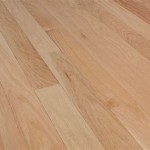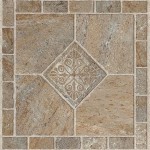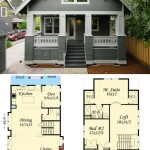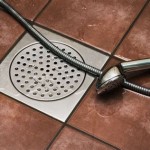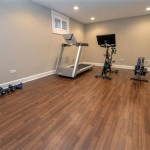Laminate Flooring That Looks Like Wood: A Comprehensive Guide
Laminate flooring, a popular choice for homeowners seeking durability and affordability, has come a long way in replicating the beauty and warmth of real wood. With advancements in technology and design, laminate floors now offer stunningly realistic wood-look aesthetics, making it difficult to distinguish from the genuine article.
This article aims to provide a comprehensive guide to laminate flooring that looks like wood, delving into the intricacies of design, installation, and maintenance, shedding light on the advantages and considerations of choosing this versatile flooring option.
Understanding the Composition of Laminate Flooring
Laminate flooring is a multi-layered composite material that combines durability and affordability. Its core structure consists of a high-density fiberboard core, which provides stability and strength. Overlaid on the core is a decorative layer that mimics the appearance of wood, stone, or tile. This layer features a high-resolution photograph of the desired material, creating a visually convincing imitation.
The decorative layer is protected by a transparent wear layer, typically made of aluminum oxide, which safeguards the floor from scratches, scuffs, and fading. The wear layer's thickness determines the durability of the laminate, with higher numbers denoting greater resistance to wear and tear.
The Benefits of Choosing Laminate Flooring That Looks Like Wood
Laminate flooring that simulates the look of wood offers a compelling alternative to traditional hardwood flooring, presenting several advantages:
Affordability:
A significant benefit of laminate flooring is its cost-effectiveness. It is generally less expensive than hardwood flooring, making it a more accessible option for budget-conscious homeowners.
Durability:
Laminate flooring boasts exceptional durability, making it a suitable choice for high-traffic areas. Its wear layer effectively shields the decorative layer from scratches and impacts, ensuring a long-lasting finish.
Ease of Maintenance:
Laminate flooring requires minimal maintenance. Regular sweeping or vacuuming is sufficient to remove dust and debris, while occasional damp mopping can maintain its cleanliness.
Water Resistance:
Modern laminate flooring is designed to withstand moisture, making it suitable for kitchens, bathrooms, and basements. However, opting for a specifically water-resistant laminate is essential for these spaces.
Variety of Styles and Colors:
Laminate flooring offers a wide range of finishes and colors, allowing homeowners to select styles that complement their décor. From classic oak to contemporary walnut, the options are nearly limitless.
Installation Considerations for Laminate Flooring
Installing laminate flooring is generally straightforward, often achievable as a DIY project. However, careful preparation is essential for a successful installation:
Subfloor Preparation:
The subfloor must be level and smooth to ensure proper installation. Any unevenness or imperfections can compromise the integrity of the floor and lead to problems.
Underlayment:
Underlayment provides an additional layer of cushioning and sound insulation. It helps to minimize noise and provide a more comfortable walking surface.
Floating Installation:
Laminate flooring is typically installed using a floating method, where the planks are interlocked and not directly attached to the subfloor. This allows for expansion and contraction caused by temperature fluctuations.
Cutting and Fitting:
Laminate planks can be cut to fit around obstacles and corners using a utility knife or a saw. Precision is essential to ensure a seamless and aesthetically pleasing finish.
Maintaining Laminate Flooring That Looks Like Wood
To preserve the beauty and longevity of your laminate flooring, regular maintenance is crucial:
Regular Cleaning:
Sweep or vacuum the floor regularly to remove dust and debris. Avoid using harsh chemicals or abrasive cleaners, as they can damage the wear layer.
Damp Mopping:
For deeper cleaning, damp mop the floor using a mild cleaning solution and a soft cloth. Ensure that the floor is thoroughly dried after mopping to prevent water damage.
Protective Measures:
Place furniture pads under heavy furniture pieces to prevent scratching or indentations. Use doormats to trap dirt and grit that can be tracked into the house.
Choosing the Right Laminate Floor: Key Factors to Consider
When selecting laminate flooring that mimics wood, several factors are crucial to ensure a successful purchase.
Wear Layer Thickness:
The wear layer thickness is a key indicator of durability. Higher numbers denote greater resistance to scratches, scuffs, and fading, making them ideal for high-traffic areas.
Realistic Wood Appearance:
Pay close attention to the quality of the decorative layer. Look for laminate flooring with high-resolution photographs and realistic wood grain textures.
Color and Style:
Choose a color and style that complements your overall décor. Consider the existing furniture, wall colors, and overall design aesthetic.
Environmental Certifications:
Consider laminate flooring that is certified by reputable organizations like the Forest Stewardship Council (FSC), ensuring responsible forest management practices.
By carefully choosing laminate flooring that looks like wood and adhering to proper installation and maintenance practices, homeowners can enjoy a beautiful, durable, and cost-effective flooring solution that adds warmth and character to their living spaces.

Laminate Floors Get The Look Of Wood And More For Less

Best Wood Look Flooring Options America

Types Of Laminate Flooring The Home

Laminate Wood Flooring Ideas

What Flooring Looks Like Wood America

The Best Fake Wood Flooring 4 Faux Floor Ideas

Antique Tobacco Pine Boardwalk Hardwood Floors

2025 Laminate Flooring Trends 10 Stylish Ideas
Luxury Vinyl Plank Floors That Look Like Wood

Laminate Floor Buying Guide Lowe S


